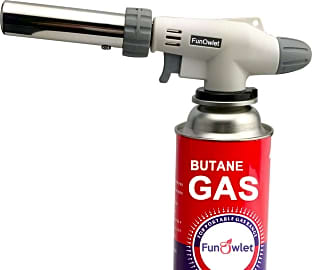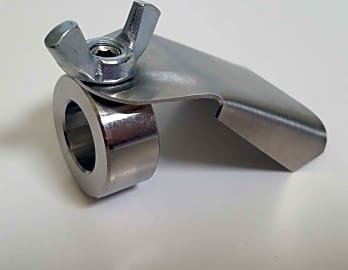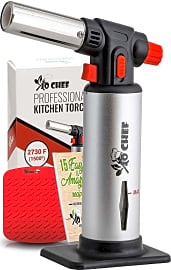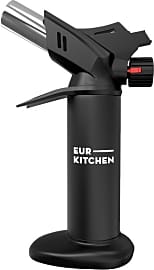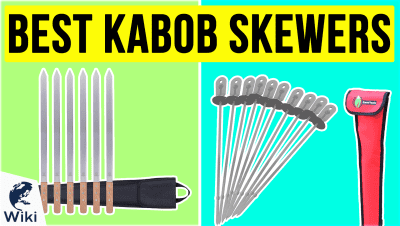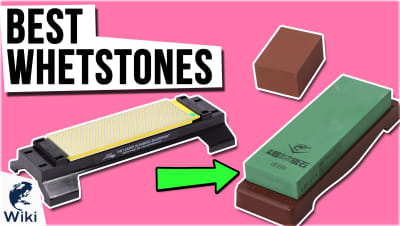The 10 Best Cooking Torches

This wiki has been updated 38 times since it was first published in April of 2015. If you're looking to take a walk on the culinary wild side, these cooking torches can help you sear meats, whip up a mean crème brûlée, or even ignite some flaming cocktails. Remember that you will be playing with fire, though, so make sure that everything is screwed on tightly before you light it up, and keep it out of reach of children — or anyone who's had a few of your Flaming Dr. Peppers. When users buy our independently chosen editorial picks, we may earn commissions to help fund the Wiki.
Editor's Notes
February 11, 2021:
After reviewing the models on the market, we still stand by 90 percent of our recommendations from the last time we visited this list. In fact, we would still recommend all of previous selections if not for the fact that the Booker & Dax Searzall is suffering from availability issues and is often hard to find in stock. Because of this, we believe it is more helpful to our readers to include a different option that can actually be purchased when you need it. In this case, that meant adding the EurKitchen TNG-2018, which we like for its smart safety features. Also, the SearTeq Attachment can perform many of the same tasks as the Searzall, as both are designed to spread out the heat from a blowtorch for more uniform searing. With all of that said, we did still include the Searzall as a special honor and linked directly to the company's website, where you may sometimes find it in stock. Just be aware that you will also need to buy a separate blowtorch and it does cause excessive fuel usage.
December 11, 2019:
There are three main types of torch commonly seen in kitchens. The least expensive and most compact is the refillable variety such as the Jo Chef Kitchen. This type isn't incredibly versatile, but they are generally pretty cheap. The Cadrim 18051 and IdeaCone Culinary are two- and five-nozzle variants on this simple style, and their wider output adds a little margin of error when you're toasting touchy desserts like creme brulee and meringues. It should be noted, though, that this type doesn't generally have a wide and hot enough flame for searing steaks.
Another type commonly found in kitchens is designed to screw onto disposable butane canisters. The FunOwlet 01 is relatively low-priced and works just fine, and the Iwatani Pro 2 is slightly more refined but about twice as expensive. With patience, these can be used to finish a steak or two, but they work pretty slowly as their flame isn't much larger than that of the first torch type mentioned.
Probably the most useful variety is the one actually meant for use in soldering, home and auto repair, and other, larger ventures, the propane blowtorch. The Bernzomatic TS8000 and the equally well-made Master Appliance PT-2000SI take full advantage of either propane or MAPP gas and can reach well over 3,000 degrees Fahrenheit. Their high temperatures and large flame size make them excellent choices for searing steaks prepared using sous vide machines without adding the gray ring that comes along with pan-searing. The Bernzomatic 4500HS is only different from those two by virtue of its wide nozzle that, while intended for activating shrink wrap, works quite well for searing.
We also included the SearTeq Attachment and Booker & Dax Searzall because, while they do still require you to supply a torch, they can turn a super-hot and slightly unwieldy blowtorch into a relatively easy-to-use device with diffused heat rather than a tightly focused flame.
Special Honors
Booker & Dax Searzall The Booker & Dax Searzall attaches to the top of a high-heat nozzle and deflects its output, resulting in radiant heat that promises an even and consistent sear without burning or overheating a delicately cooked piece of meat. bookeranddax.com
How Cooking Torches Work
Despite their small size, cooking torches can burn at temperatures over 2,000° F, which is more than enough for any type of culinary use.
Cooking torches work in a similar manner to larger, industrial blow torches. They are loaded with a pressurized canister of butane, propane or propylene gas and then a trigger or dial of some sort is used to release and control the flow of gas. Most have holes in the exit nozzle to introduce air to the fuel, which allows it to burn better and hotter. Some cooking torches also allow you to control the amount of air pulled in through the holes as a secondary method of adjusting the intensity of your flame.
The ignition system is similar to what you find in a gas BBQ. The Piezo effect is used to generate a spark that ignites the fuel and starts the fire. Some cooking torches require you to constantly hold down the trigger to release the gas, while others have a trigger lock, which allows you to relax your hand or even set it down when you are working without extinguishing the flame.
Despite their small size, cooking torches can burn at temperatures over 2,000° F, which is more than enough for any type of culinary use. To put that in perspective, caramelization of the sugar on top of a Crème brûlée, takes place at between 230° F and 320° F.
Choosing The Right Cooking Torch
Cooking torches come in many shapes and sizes, but they are all designed to accomplish the same thing. When trying to decide which one is best for you, there are a couple of things to keep in mind. If you think you will be using one often and holding it for long periods of time, you'll probably want to keep your eye out for a smaller, lightweight model to avoid hand fatigue while you work. Try and purchase one that feels comfortable in your hand as well.
When trying to decide which one is best for you, there are a couple of things to keep in mind.
Another good idea is to pick one with a stable base and a trigger lock, so you can set it down as needed while you work, without having to relight it every time you pause for a moment. Buying one with an adjustable flame is also a good idea. This will give you more precise control of the heat and allow to get that perfect char with less chance of burning your food.
You'll also want to learn about the different properties of each fuel type, so you can decide which you prefer. Some feel butane leaves an unpleasant after taste, but finding propylene and propane gas canisters in the right size can sometimes be difficult. If you prefer to go with one that uses one of these gases, check the availability of fuel in your area or you may have to purchase them online.
After that, other features to look out for in a cooking torch will come down to your wants and budget. If you don't mind spending a bit more, there are some great models that have a fuel gauge, so you can always be ready with another canister before you run out. The ability to work while inverted is another handy feature that some cooks may appreciate. If all you are doing is toasting the top of a meringue, this won't matter so much. On the other hand, if you need to be able to sear the sides of a piece of meat evenly, this feature could be invaluable.
Fun Uses For A Cooking Torch
Caramelizing the sugar on top of a crème brûlée might be what comes to mind when most people think of using a cooking torch, but there are actually a wide range of ways to use one in the kitchen, many of which are suitable for even the most amateur home cooks. Making s'mores indoors would be a perfect example. Using a cooking torch, you can achieve the same charred flavor on a marshmallow that you would find on one roasted over an open camp fire.
Using a cooking torch to finish off the meat can allow you to achieve that eye-pleasing sear and mouth-watering flavor that only fire can provide.
They can be used to sear tomato skins to add some depth of flavor to what might have otherwise been a boring dish. If you have made a casserole or soup that would be perfect with some melted cheese on top, just sprinkle it on, hit it with the torch, and in a few seconds you'll have a nice cheesy topping.
Fire roasting a pepper is another ideal way for the average home cook to use a cooking torch. Whether you are making a hamburger, infusing an olive oil with flavor, or just looking for a fun addition to a salad, charring a pepper before adding it will enhance the dish.
Sous-vide is an interesting new cooking technique that has popped up in kitchens across the world. While it might be one of the best ways to achieve a perfectly cooked, fall-apart tender cut of meat, it often leaves them with a very one-dimensional flavor. Using a cooking torch to finish off the meat can allow you to achieve that eye-pleasing sear and mouth-watering flavor that only fire can provide.
Some other fun uses include glazing sugar or fruit on top of a ham, browning the top of meringues and tarts, flash searing a piece of fish, toasting breadcrumbs, and torching wood to impart a smoky flavor to a dish or cocktail.




